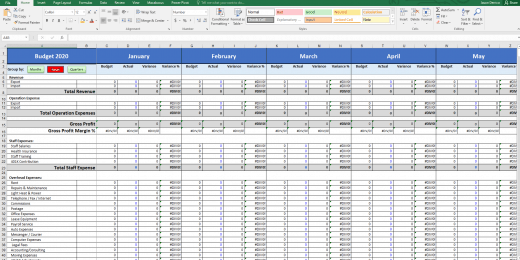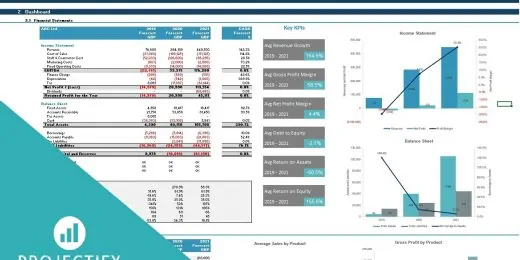Mastering the Art of Formula for Liquidity: A Closer Look

Mastering the art of calculating liquidity involves understanding specific financial ratios. Key ratios like the current ratio and quick ratio offer insight into a company’s short-term financial health.
Exploring the concept of liquidity is crucial for investors, analysts, and business owners alike, as it measures a company’s ability to meet its short-term obligations. Liquidity ratios, with their clear-cut formulas, serve as vital tools to evaluate financial flexibility. A closer look at the formulas for the current ratio (current assets divided by current liabilities) and the quick ratio (also known as the acid-test ratio, which subtracts inventories from current assets and then divides by current liabilities), helps in analyzing a firm’s operational efficiency.
Through careful examination, one can determine if a business has the financial resources to cover immediate expenses, thereby assessing its solvency and risk levels. The art of mastering these liquidity formulas not only enhances financial decision-making but also supports sustainable growth, ensuring stakeholders have a transparent view of the company’s fiscal stability.
The Essence Of Liquidity In Finance
Liquidity’s role in finance is paramount. It refers to the ease of converting assets into cash. This quality affects both individuals and corporations when managing daily operations and investments.
Core Concepts: Solvency Vs. Liquidity
Solvency and liquidity are different but connected ideas. Solvency speaks to a company’s ability to meet long-term debts. Liquidity, on the other hand, deals with short-term assets and obligations. Understanding both is critical.
| Solvency | Liquidity |
|---|---|
| Long-term financial health | Short-term asset fluidity |
| Ability to meet long-term debts | Quick asset conversion to cash |
Both concepts shape a firm’s financial strategy. Companies must balance them to succeed.
The Lifeline Of Businesses: Why Liquidity Matters
Liquidity is a business lifeline. It determines a company’s ability to pay short-term debts. Strong liquidity means survival during financial crunches.
- Handles unexpected expenses: Sudden costs need quick payment.
- Boosts investor confidence: Investors value accessible cash.
- Improves loan qualifications: Banks favor liquid companies.
The right amount of liquidity leads to growth. It gives businesses the cushion to innovate and expand without fear.
Measuring Liquidity: Key Metrics
Measuring liquidity is essential for evaluating how quickly a company can turn its assets into cash. These metrics show a business’s ability to cover its short-term debts. This is vital for day-to-day operations and for securing the trust of investors and creditors. Let’s break down the crucial ratios to master the liquidity formula.
Current Ratio: Short-term Financial Health
The Current Ratio measures a company’s ability to pay off its short-term obligations with short-term assets. An ideal current ratio is between 1.5 to 3. This signals good financial health. It is calculated as follows:
| Current Ratio | Total Current Assets / Total Current Liabilities |
|---|
- Current Assets: cash, inventory, receivables.
- Current Liabilities: short-term debt, payables.
Quick Ratio: Stripping Down To Essentials
The Quick Ratio, also known as the acid-test ratio, takes a more rigorous look. It excludes inventory from the assets. The reason is that selling inventory takes time. A quick ratio higher than 1 indicates strong liquidity. The formula is:
| Quick Ratio | (Total Current Assets – Inventory) / Total Current Liabilities |
|---|
Only the most liquid assets are considered here:
- Cash.
- Marketable securities.
- Accounts receivable.
Components Of The Liquidity Formula
Liquidity measures how quickly an asset can convert to cash. Businesses need liquidity to meet short-term obligations. This essential skill ensures that a company can pay bills and survive financially. Mastering the art of liquidity requires understanding its components.
Identifying Liquid Assets: What Counts?
Liquid assets are those you can swiftly turn into cash without losing value. Common examples:
- Cash: Ready to use.
- Cash Equivalents: Short-term government bonds, money market funds.
- Accounts Receivable: Money owed by customers.
- Short-Term Investments: Stocks and bonds you can sell.
- Inventory: Goods ready for sale.
Assets like property or specialized equipment are not liquid. They take time to sell and might not keep their value.
Accounting For Current Liabilities
Current liabilities are debts due in a year. They impact liquidity. Your business must pay these:
- Short-Term Loans: Borrowed funds to be paid soon.
- Accounts Payable: Money you owe to suppliers.
- Accrued Expenses: Wages or taxes due before the year ends.
- Other Payables: Remaining debts like rent, utilities.
Having more liabilities than liquid assets can cause trouble. You may face cash flow issues. Keep a careful watch on both to stay stable.
Calculating Liquidity Ratios: Step-by-step
Liquidity ratios measure a company’s ability to pay its short-term debts. This step-by-step guide shows how to calculate these crucial financial health indicators.
Working Examples: Liquidity Ratio Calculations
Working Examples: Liquidity Ratio Calculations
Learn liquidity ratio calculations through illustrated examples. Understand the current and quick ratios, key indicators of financial stability.
- Current Ratio Calculation
| Formula | Description |
|---|---|
| Current Ratio = Current Assets / Current Liabilities | This formula shows if a company has enough assets to cover its liabilities. |
Example: A company with $200,000 in assets and $100,000 in liabilities has a current ratio of 2.
- Quick Ratio Calculation
| Formula | Description |
|---|---|
| Quick Ratio = (Current Assets – Inventories) / Current Liabilities | This formula tells us how well a company can meet liabilities without selling inventory. |
Example: With $200,000 in assets, $50,000 in inventories, and $100,000 liabilities, the quick ratio is 1.5.
Interpreting Results: Ratios in Context
Interpreting Results: Ratios In Context
Understanding what different liquidity ratios mean gives insight into a company’s stability. Here are key points to consider:
- Current Ratio: Higher than 1 suggests good short-term financial health.
- Quick Ratio: Closer to 1 or higher indicates strong liquidity, even without inventory sales.
Compare ratios across similar companies to get a clearer picture of financial standing.
Impacts On Liquidity: Analyzing External Factors
Understanding liquidity is crucial for financial success. Liquidity measures how quickly assets convert to cash. Various external factors, such as market conditions and regulatory policies, directly impact liquidity. Experts and investors must understand these influences to make informed decisions. Let’s dive into how external factors affect liquidity.
Market Conditions And Liquidity
The market environment plays a pivotal role in asset liquidity.
- Market stability encourages trading and enhances asset liquidity.
- Volatility can decrease liquidity as investors hesitate to trade.
- Global events, like economic crises, can dry up liquidity fast.
Economic indicators, such as GDP reports and unemployment rates, also influence liquidity. Stable economies typically see higher liquidity levels than those experiencing turmoil.
Regulatory Environment Influence
Governments and financial authorities set rules affecting liquidity.
| Regulatory Change | Effect on Liquidity |
|---|---|
| Stricter banking regulations | Limits banks’ ability to lend, reducing market liquidity. |
| Lax tax policies | Promotes investment, potentially raising liquidity. |
| Increased transparency requirements | Boosts investor confidence, may improve liquidity. |
Rapid changes in these rules can lead to sudden shifts in liquidity. Investors and businesses must stay alert to navigate these waters efficiently.
Improving Liquidity: Effective Strategies
Mastering the art of liquidity is crucial for business growth. Solid liquidity signifies a healthy company. It means having enough cash on hand to pay bills, debts, and unexpected expenses. Let’s dive into strategies to improve liquidity.
Cash Management Techniques
Better cash management leads to improved liquidity. Here are some straightforward strategies:
- Accelerate receivables: Encourage early payments with discounts.
- Extend payables: Negotiate longer payment terms with suppliers.
- Monitor cash flow: Use software for real-time cash flow insights.
- Optimize pricing: Review and adjust pricing models regularly.
Short-term financing, like lines of credit, can buffer cash reserves.
Inventory Control: Turning Over New Leaves
A nimble inventory system is a liquidity enhancer. Effective inventory management frees up cash.
| Strategy | Benefit |
|---|---|
| Just-in-Time Inventory: Order stock as needed. | Reduces holding costs. |
| Regular Audits: Track inventory accurately. | Prevents overstocking and waste. |
| Supplier Relationships: Foster strong ties. | Secures better terms and pricing. |
| Demand Forecasting: Predict sales trends. | Balances stock levels with actual demand. |
Implementing tech tools like inventory management software streamlines these processes.
Technology’s Role In Liquidity Analysis
Liquidity is like the lifeblood of financial markets. It keeps the flow of transactions smooth. Now, technology plays a critical role in analyzing liquidity. It makes complex calculations quick and accurate. This helps investors and companies make better decisions. Let’s explore how technology is changing the game.
Financial Software: A Game Changer
Financial software has revolutionized liquidity analysis. It brings precision to financial data. With state-of-the-art tools, analyzing cash flow is faster. Here’s how software makes a difference:
- Automated data collection – Saves time and reduces errors.
- Real-time analysis – Offers up-to-the-minute liquidity positions.
- Scenario modeling – Tests how different events affect liquidity.
These tools give businesses the power to stay agile. They can adapt quickly to market changes.
Ai And Big Data: Predictive Insights
AI and big data bring forecasting to another level. They analyze vast amounts of information. This helps predict future liquidity trends. Here’s what they offer:
- Pattern recognition – Identifies market trends from past data.
- Predictive analytics – Forecasts future cash flows and bottlenecks.
- Risk assessment – Evaluates liquidity risks before they emerge.
Together, AI and big data provide a map for navigating financial waters. They help spot opportunities and dodge risks.
Case Studies: Success And Failure
Understanding the cause and effect in the realm of liquidity management is crucial. Companies around the globe experience highs and lows. Analyzing these stories highlights what to emulate and what to avoid. Let’s dive into the real-world examples under the microscope.
Triumphs In Liquidity Management
Apple Inc.’s robust cash reserves stand as a testament to excellence in liquidity management. Their strategic planning serves as an educational goldmine for businesses prioritizing stable financial health. Witness their approach in navigating market fluctuations with finesse.
- Ample cash on hand allows for smooth operation regardless of external shocks.
- Expert investment strategies accentuate the importance of diversifying assets.
- Timely debt repayment establishes reputation, thus reducing future borrowing costs.
Lessons From Liquidity Crises
The downfall of Lehman Brothers illustrates a liquidity crisis that rippled across economies. This case underscores critical missteps in liquidity risk assessment. Businesses can learn how to secure their financial buffers and protect against similar pitfalls.
| Case | Challenge | Outcome |
|---|---|---|
| Lehman Brothers | Heavy reliance on short-term funding | Bankruptcy and market disruption |
| Enron | Asset-liability mismatch and accounting scandal | Collapsed trust and liquidation |
Effective contingency plans can prevent financial turmoil. Continuous monitoring and maintaining adequate cash reserves are pivotal for sustainability. Remember, survival during crisis times largely comes down to liquidity readiness.
Frequently Asked Questions
What Is Liquidity In Financial Terms?
Liquidity refers to the ease of converting assets into cash without affecting their market price. High liquidity ensures quick transactions while retaining value.
Why Is Liquidity Crucial In Investing?
Liquidity is vital as it allows investors to enter or exit positions swiftly. This flexibility aids in reducing risks and improving the potential for profit.
How Do You Calculate Liquidity Ratios?
Liquidity ratios are calculated by dividing current assets by current liabilities. Common ratios include the Current Ratio and the Quick Ratio, which measure short-term solvency.
What Impacts A Company’s Liquidity?
Factors affecting a company’s liquidity include its cash holdings, receivable accounts, inventory levels, current liabilities, and access to credit facilities.
Conclusion
Understanding liquidity formulas is essential for financial stability and growth. By mastering these calculations, you can make smarter investment decisions and manage cash flow more effectively. Embrace these tools to ensure your assets remain fluid and your portfolio flourishes. Embrace the power of liquidity knowledge—your financial future depends on it.



















































